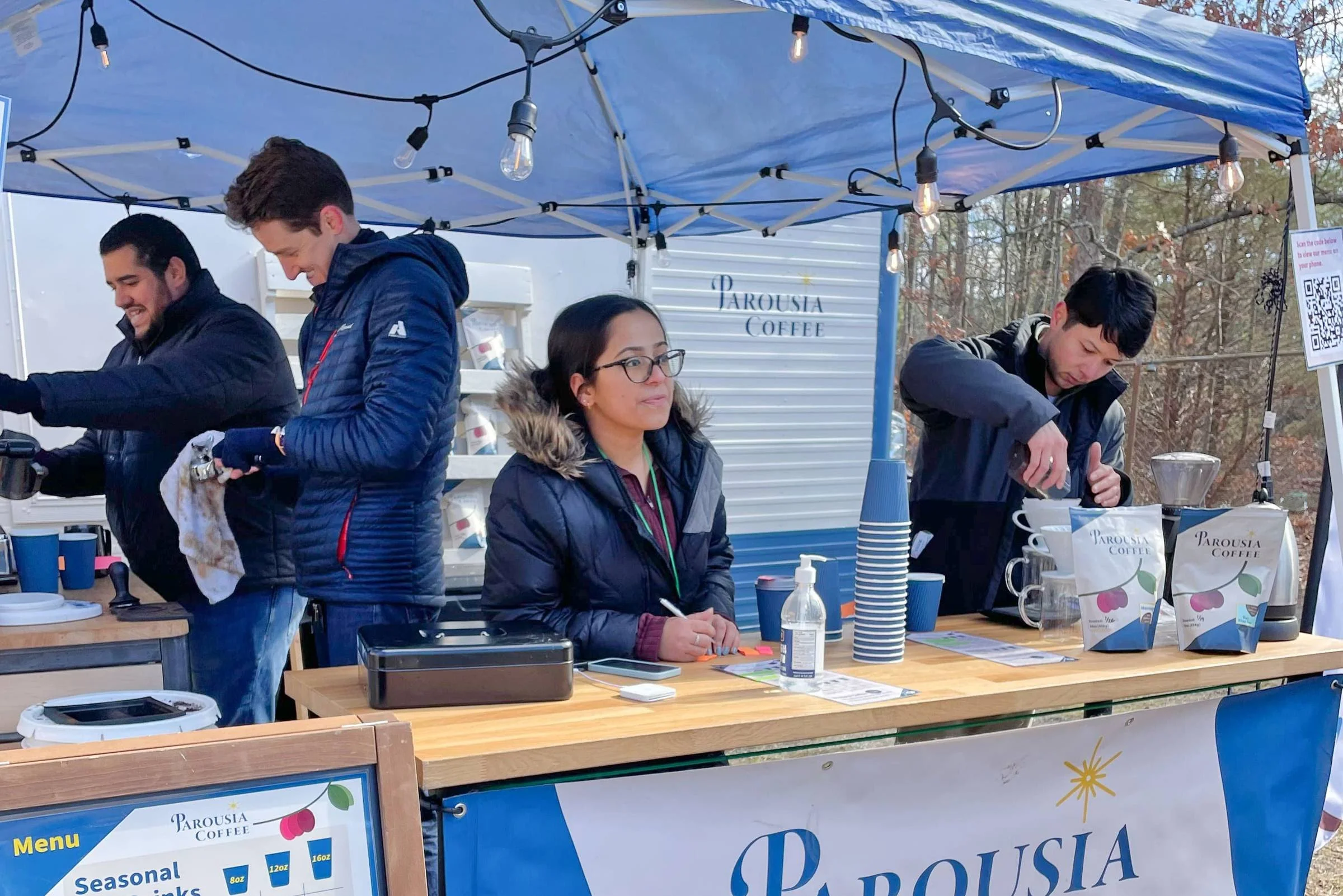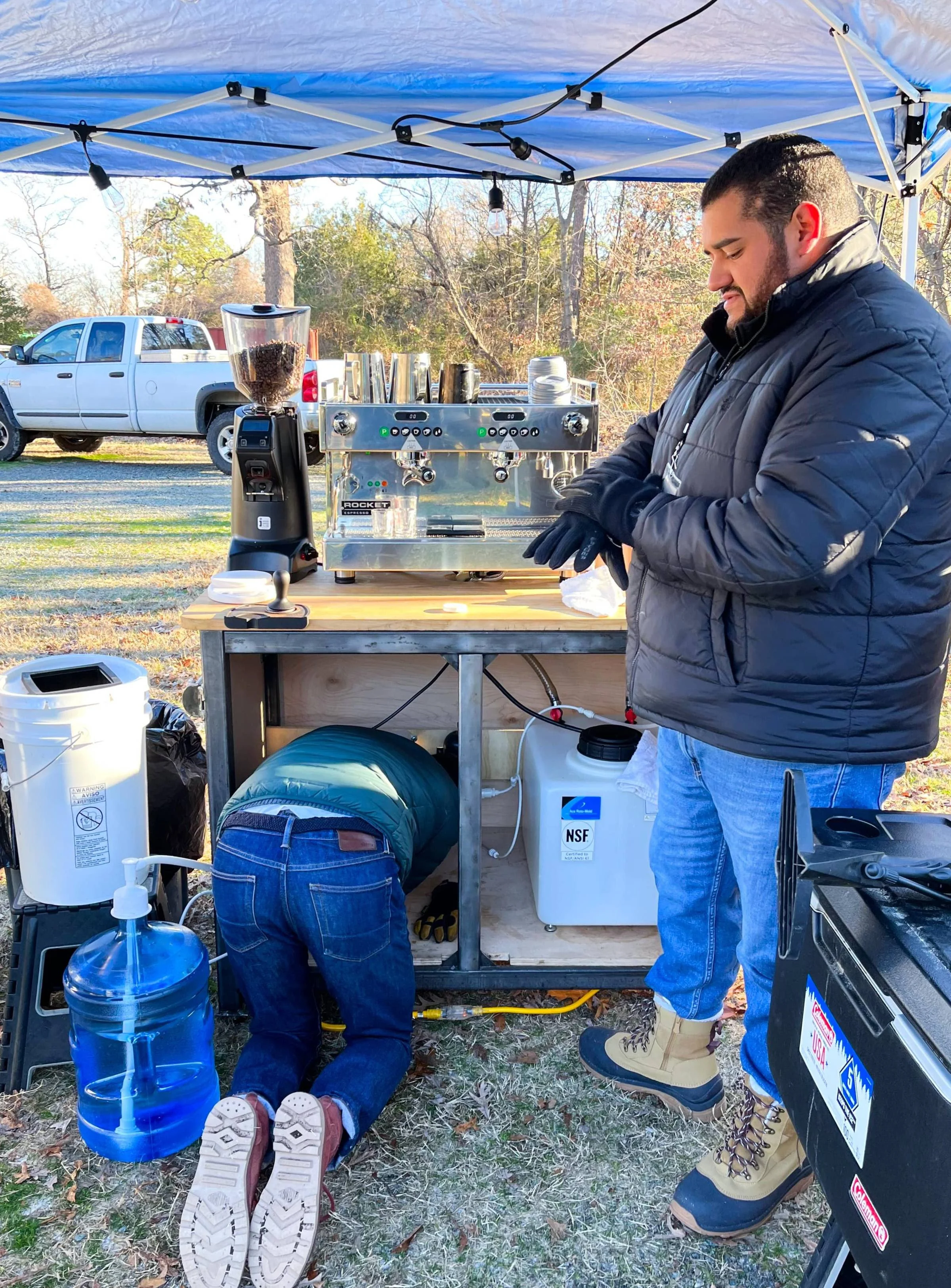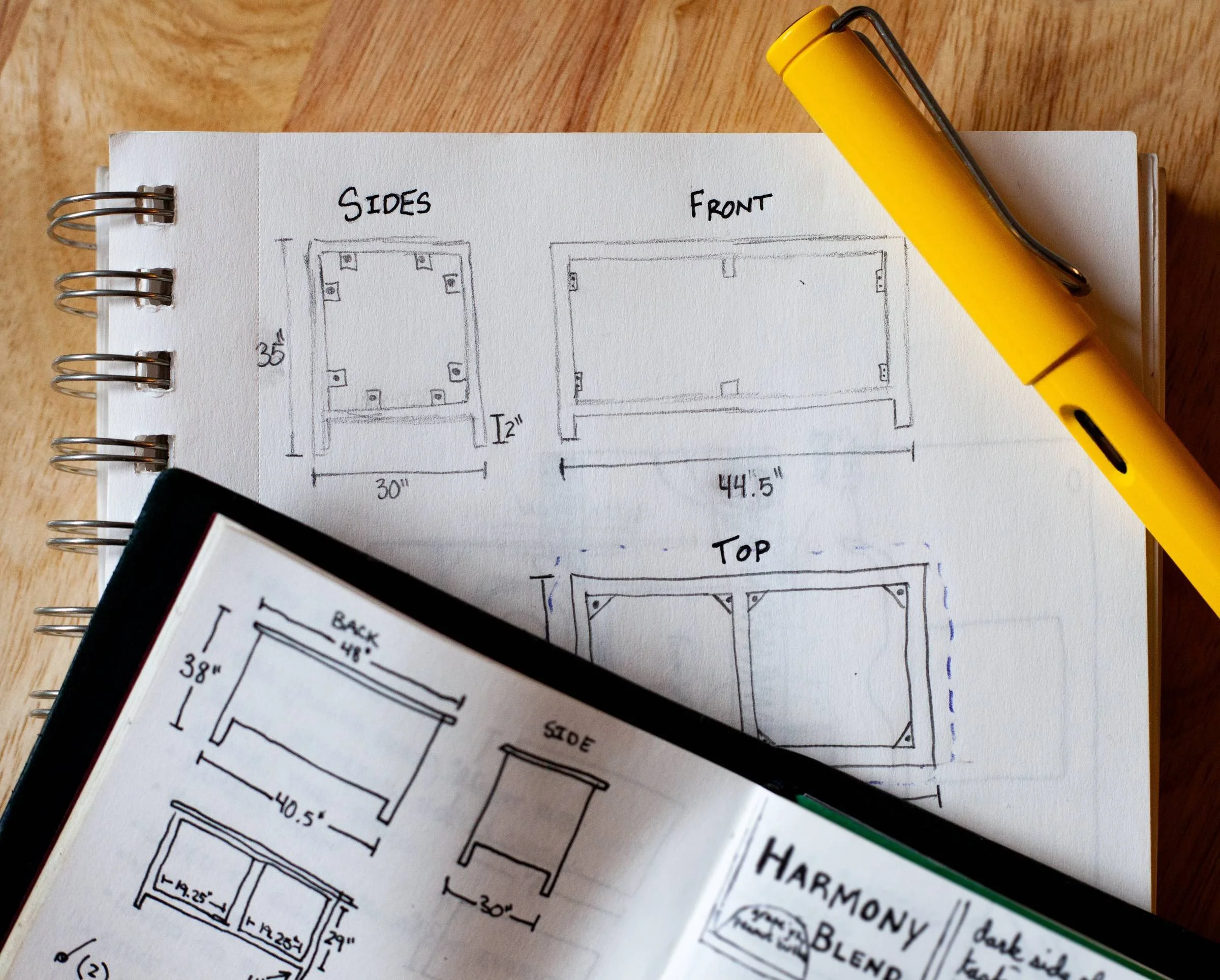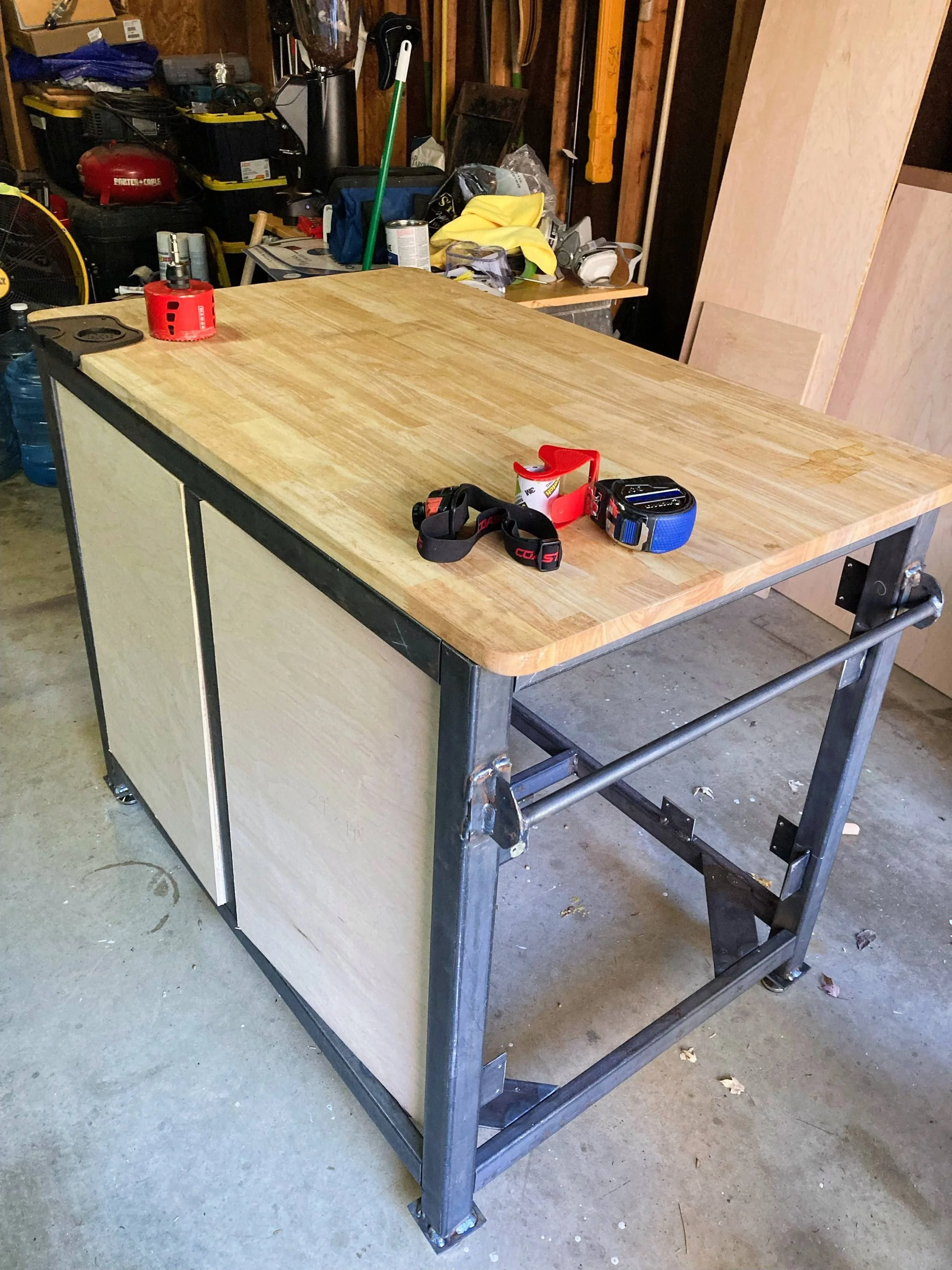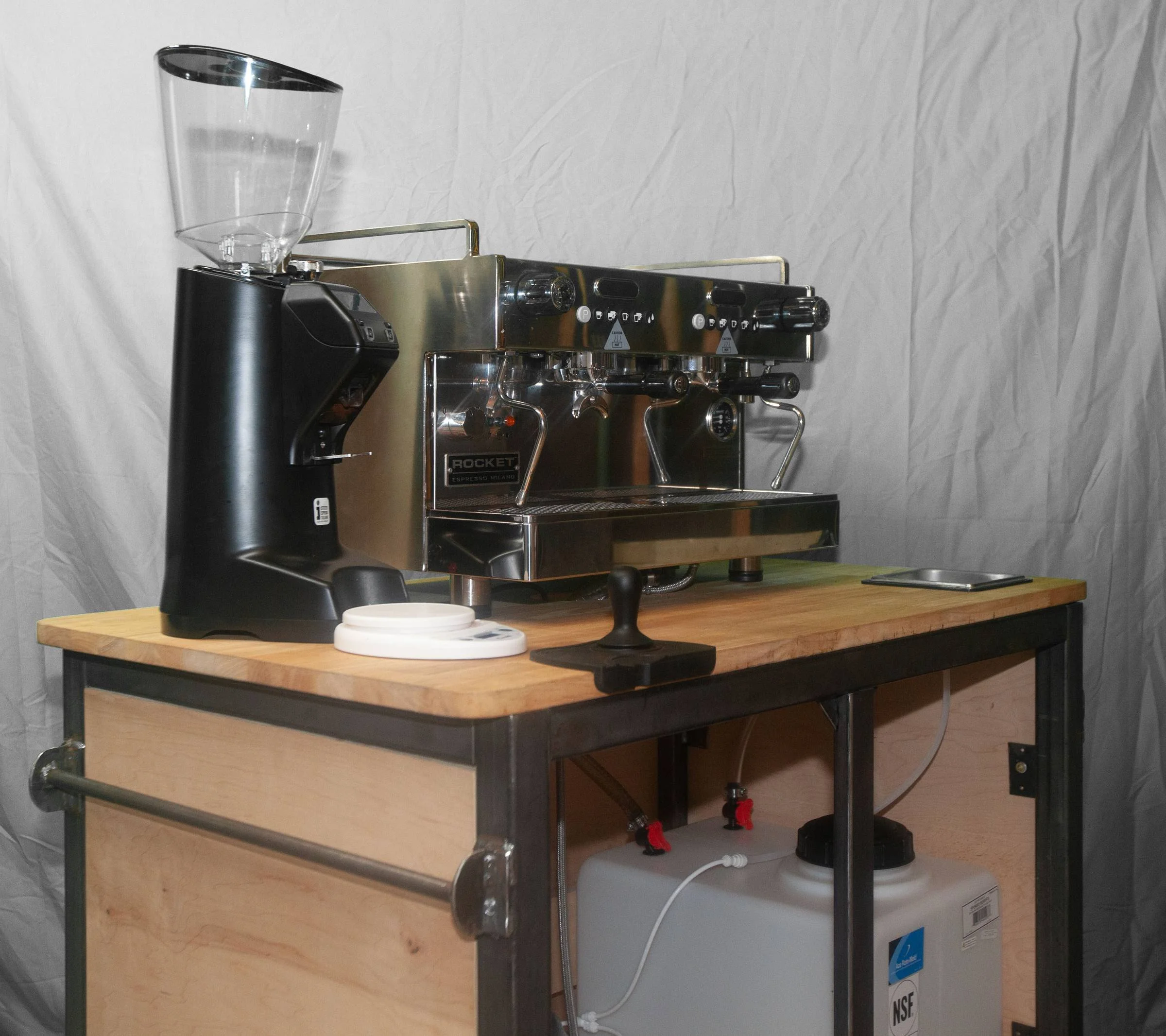The Cart Is The Heart
Frozen
Months before the trailer even had a floor, we had started serving espresso at the market. During those winter months, the entire operation was placed one piece at a time into the bed of the truck like a heavy, three dimensional game of Tetris.
Two hundred pound espresso cart, six foot maple table, pour over table, tent, signage, and 150 pound generator—all were hoisted up onto the tailgate and then slid into place.
The grinder, espresso machine, water jugs, and syrups somehow fit into the cab. With a hope and a prayer, we’d tuck them in on Friday night. The hope was that the garage would provide enough shelter to keep the espresso machine lines from freezing overnight. The prayer was that we’d be able to get everything operational again if they froze anyway.
The hopeful Friday night prayers predictably evolved into frantic Saturday morning prayers as we worked to unfreeze the water lines. This often unfolded past the set up time and into the start of the market.
It would begin with the dreaded hum of the pump futilely trying to move water through frozen tubes. Even worse was when both pump and espresso machine froze up. The only remedy was to move the frozen appliances back into truck.
On hands and knees begging the pump to work.
With heat blasting out of the vents, we’d set the monolithic espresso machine in the back of the cab to warm up on its own. I’d sit in the front seat tending to the pump like a newborn. After holding the tubes up to the heat the ice would slowly release its hold. It would emerge from the tubes like mini ice pops.
Our reward for getting everything warmed up and functional was three hours of making espresso drinks in the winter wind and cold. With dry, cracked hands we’d do our best to keep up with the queue. It was trial by every element other than fire.
Cart Before The Horse
If the trailer is the body of the mobile cafe, the cart is the heart. As long as there’s a power source, it can facilitate the making of drinks on its own.
After numerous abortive attempts to buy a trailer, we experienced the frustration of powerless waiting. During the drive home from another one of these unsuccessful missions, we had the idea of starting on the cart before the trailer.
The outcome, a mobile cafe, would be the same but it would allow us to progress while we awaited a trailer. We arrived back at Christian’s house and marched to the kitchen where we began taping appliance shapes and dimensions onto the counter.
With an alacrity that rarely occurs in 'real life', we ordered the espresso machine and grinder that evening. Staring down the blue tape on the counter, I began to consider the dimensions and look of the cart itself.
I pictured a cube with metal edges and corners framing panels of wood. It would be a harmony of the warmth of wood and the stolidity of raw steel.
Mike, our ever helpful advisor, connected us with a retired power plant machinist for the welding. We stood in the driveway outside his workshop making sketches on scrap paper. An hour later we left with a handshake agreement and a cut list for the steel.
A week and a half after that we fetched a freshly welded steel frame, ready to be clad in maple. In the mean time, a pallet bearing a shiny chrome espresso machine had arrived from Italy. A heavy brown box with an espresso grinder had arrived from Seattle.
With the cart ready and the gleaming machines assembled on top, espresso trials, and triumphs, awaited.

